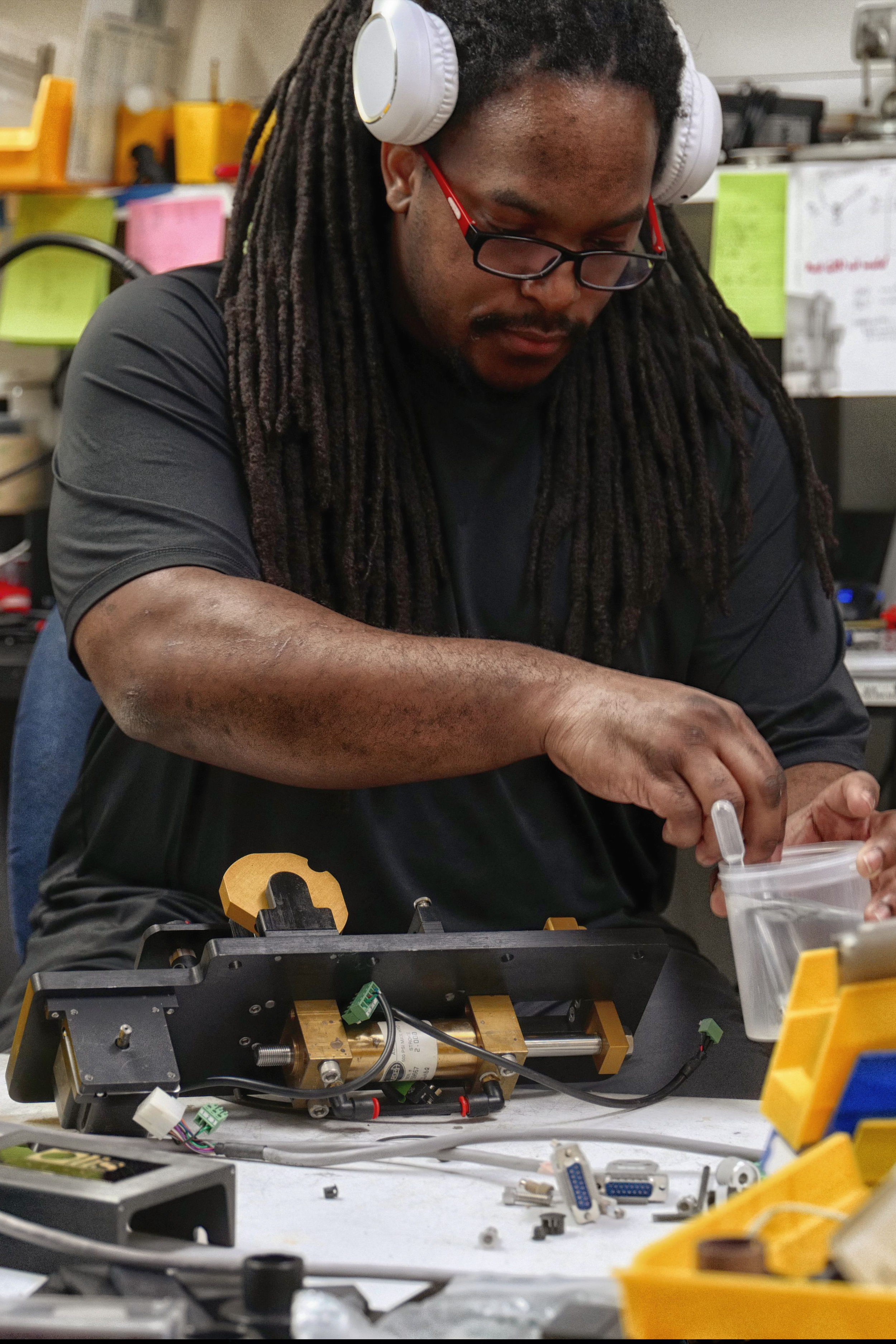The Best Guide To Circularly Polarized Luminescence
The Best Guide To Circularly Polarized Luminescence
Blog Article
The smart Trick of Spectrophotometers That Nobody is Talking About
Table of ContentsThe Main Principles Of Circularly Polarized Luminescence Uv/vis Fundamentals ExplainedGet This Report about Circular DichroismExamine This Report on Uv/vis/nirThe Buzz on Uv/vis/nir

Although spectrophotometry is most commonly applied to ultraviolet, noticeable, and infrared radiation, modern spectrophotometers can interrogate large swaths of the electro-magnetic spectrum, including x-ray, ultraviolet, visible, infrared, and/or microwave wavelengths. Spectrophotometry is a tool that hinges on the quantitative analysis of particles depending upon how much light is soaked up by colored substances.
Spectrophotometers Fundamentals Explained
A spectrophotometer is frequently used for the measurement of transmittance or reflectance of solutions, transparent or nontransparent solids, such as refined glass, or gases. Although many biochemicals are colored, as in, they soak up visible light and for that reason can be determined by colorimetric procedures, even colorless biochemicals can frequently be transformed to colored substances appropriate for chromogenic color-forming reactions to yield compounds ideal for colorimetric analysis.: 65 However, they can likewise be created to determine the diffusivity on any of the listed light ranges that generally cover around 2002500 nm using various controls and calibrations.
An example of an experiment in which spectrophotometry is utilized is the decision of the stability constant of a solution. A specific chain reaction within an option may happen in a forward and reverse instructions, where reactants form products and products break down into reactants. At some point, this chain reaction will reach a point of balance called a stability point.
Uv/vis/nir Can Be Fun For Everyone
The amount of light that travels through the option is indicative of the concentration of particular chemicals that do not allow light to pass through. The absorption of light is due to the interaction of light with the electronic and vibrational modes of particles. Each kind of molecule has a specific set of energy levels connected with the makeup of its chemical bonds and nuclei and thus will soak up light of particular wavelengths, or energies, leading to distinct spectral homes.
They are extensively utilized in lots of industries consisting of semiconductors, laser and optical manufacturing, printing and forensic assessment, as well as in laboratories for the study of more information chemical substances. Spectrophotometry is often used in measurements of enzyme activities, decisions of protein concentrations, decisions of enzymatic kinetic constants, and measurements of ligand binding reactions.: 65 Eventually, a spectrophotometer is able to figure out, depending on the control or calibration, what substances are present in a target and precisely how much through estimations of observed wavelengths.
This would come as a service to the formerly developed spectrophotometers which were unable to absorb the ultraviolet correctly.
Some Known Incorrect Statements About Uv/vis
It would be found that this did not give satisfying results, for that reason in Model B, there was a shift from a glass to a quartz prism which enabled better absorbance outcomes - spectrophotometers (https://www.figma.com/file/eT4jdyebIeUQ23ozOL89IX/Untitled?type=design&node-id=0%3A1&mode=design&t=vN0gsYYCmHohU5HF-1). From there, Model C was born with an adjustment to the wavelength resolution which ended up having three systems of it produced
It irradiates the sample with polychromatic light which the sample absorbs depending upon its homes. Then it is transmitted back by grating the photodiode array which discovers the wavelength area of the spectrum. Because then, the production and implementation of spectrophotometry gadgets has actually increased immensely and has actually turned into one of the most innovative instruments of our time.

Circularly Polarized Luminescence Fundamentals Explained
The grating can either be movable or fixed.
In such systems, the grating is fixed and the intensity of each wavelength of light is determined by a various detector in the variety. When making transmission measurements, the spectrophotometer quantitatively compares the fraction of light that passes through a recommendation solution and a test service, then digitally compares the intensities of the two signals and calculates the portion of transmission of the sample compared to the referral requirement.

Report this page